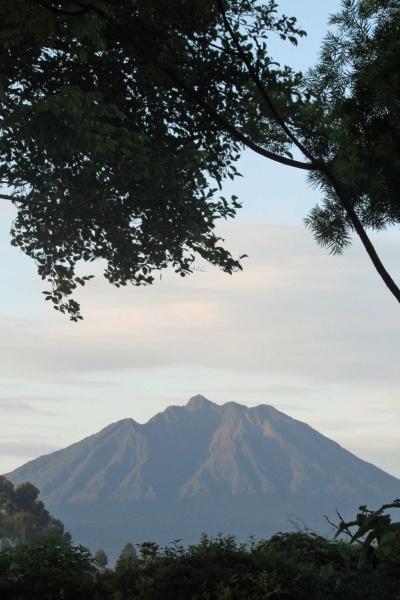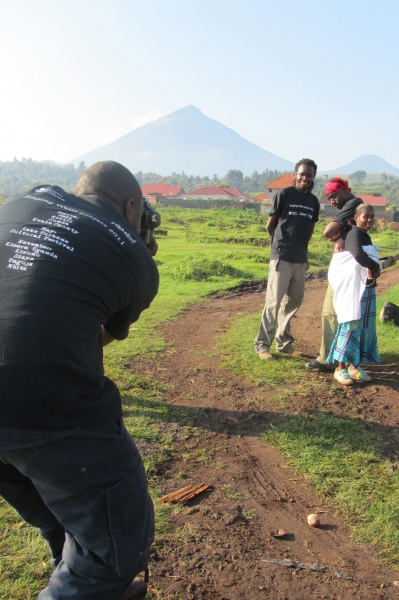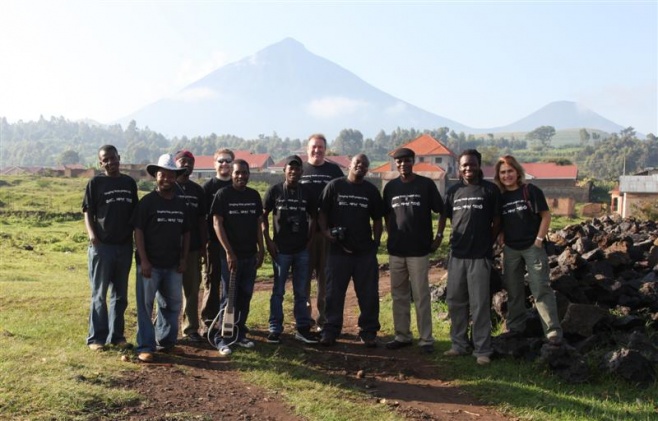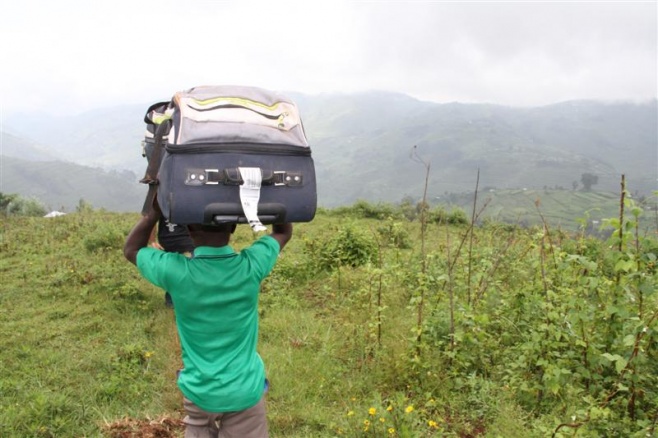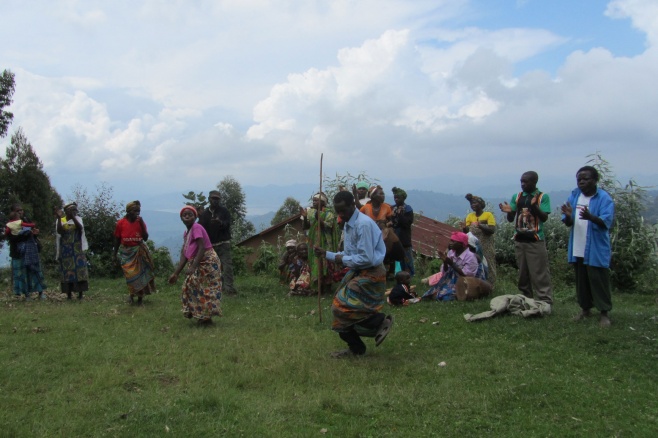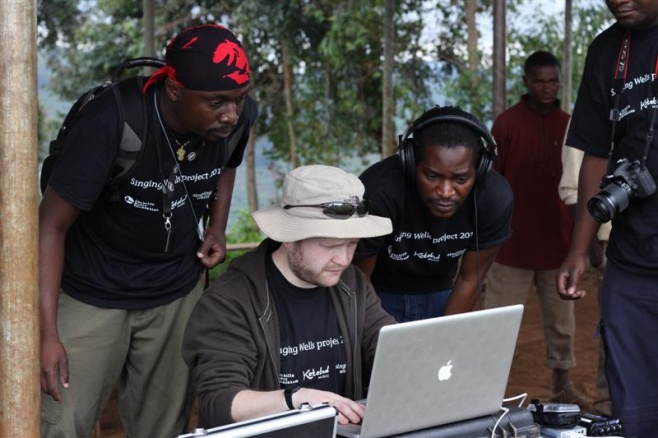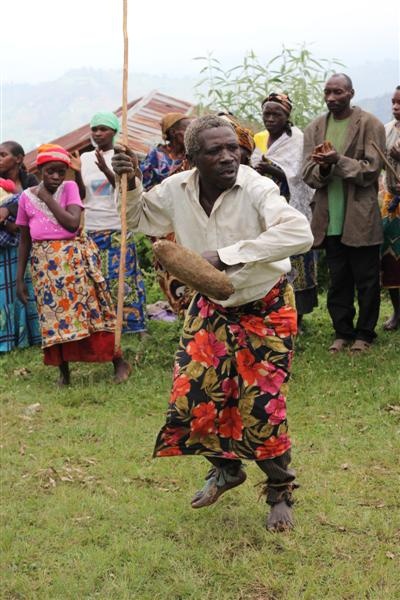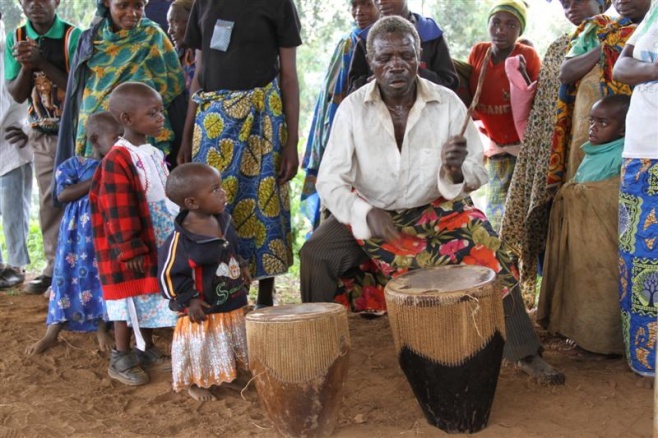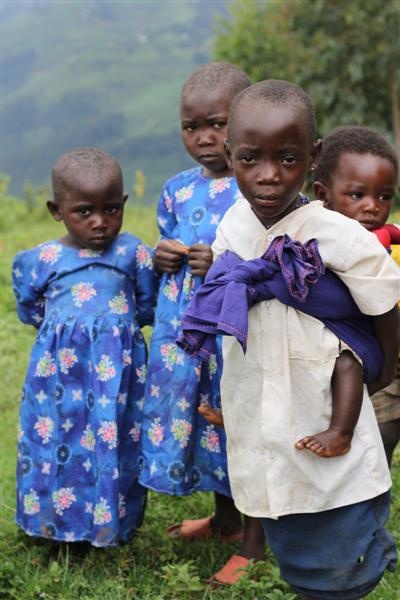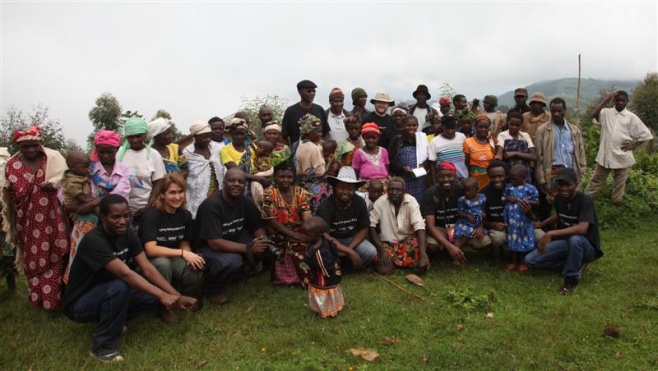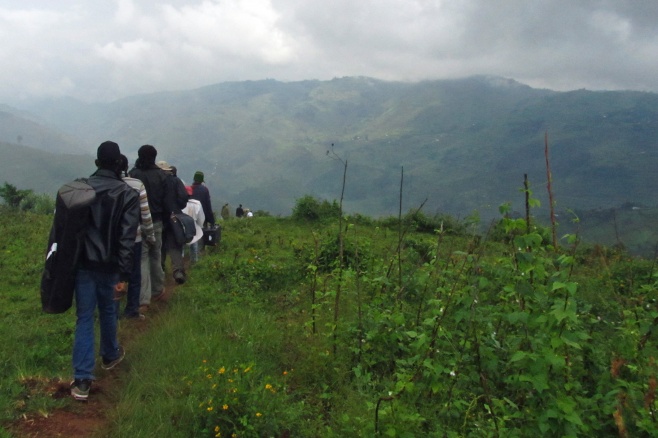DAY 4: After 3 days of travel (at least for those of us leaving from London), we were ready to record. And we rewarded with a great day of recording, starting in the morning with the Birara Dancers, led by the legendary Batwa artist, Francis Sembagare.
We woke up early and were greeted with this wonderful view from the garden of the Traveller’s Rest Guesthouse:
After breakfast our first stop was the office of the United Organisation for Batwa Development in Uganda (UOBDU), where we met Henry Neza, the Capacity Development Co-ordinator, and Alice Nyamihanda, Tourism Officer and the first University graduate amongst the Batwa communities. They are to be our hosts and translators for the two days – we were lucky to be joined by Precious as well, Alice’s five month old daughter.
Patrick photographs Alice and Precious with Winyo and Steve. And the SWP team pose at UOBDU proudly wearing our Singing Wells t-shirts
We picked up the UOBDU generator and headed to the Birara Dancers, 23 kilometers up in the hills. Along the way, we picked up an 80 year old member of the tribe who was walking from town back to her village. Yes, she walks the 46 kilometer round trip 3-4 times a week, often carrying goods to market or returning with food for the village. This was our first introduction to ‘Batwa Fitness.’ Along the way to the village we passed beautiful lakes nestled amongs the green hills – here’s one that we effectively drove completely around to get to the village.
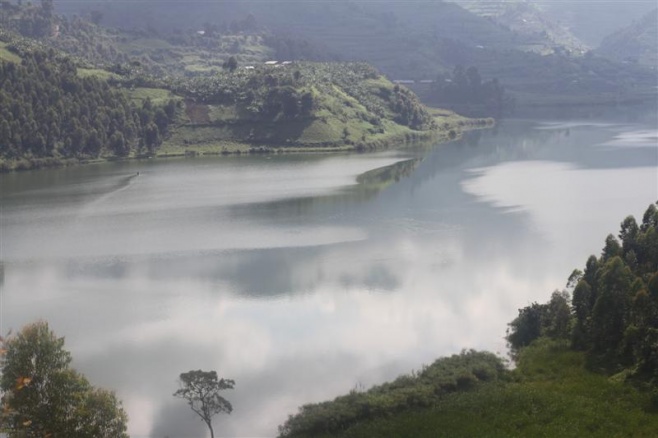
This is one of the many views of Lake Chou – 15 of our 23 kilometre drive which took us around the whole lake.
Our second introduction to ‘Batwa Fitness’ was on arrival at the village. The road stopped and we were told we’d need to take our equipment ‘up the hill’ another 1,500 metres to the top. It was at least 500 metre rise in elevation. We told you about ‘our gear’ but forgot to mention that it is NOT light. There were 10 of us and 7 heavy bags, plus the generator. We tried to take the equipment up but were quickly done in my altitude and the slippery red mud of the region. Several young Batwa boys came down, grabbed our equipment and ran up the hill. One young boy picked a hand full of grass and made a little pillow. He put this on his head and then grabbed the generator, which two of us had moved maybe 400 metres, and popped it on his head. And then he ran up the hill. So, there we were, humbled by the strength of the Batwa, before we had even witnessed their incredible singing and dancing.
We finally struggled up the hill and saw the recording site for the first time. There’s a great irony about hills in Uganda. From a farming perspective, hill tops are often the worst land, far from towns and difficult to farm. The Batwa find themselves on a lot of hill tops. From an observers perspective, however, we found ourselves at the top of a hill, with a 360 degree view across the mountains and valleys. Every hill has been farmed, creating a mosaic of fields. Same were tilled, others in full bloom, so we faced a beautiful patchwork of terracotta and green. These are the predominate colours of this trip.
The dance site itself was no less beautiful:
We then set up the ‘studio’ ready to record the Birara Dancers: The key sound engineers do a final check before we begin:

